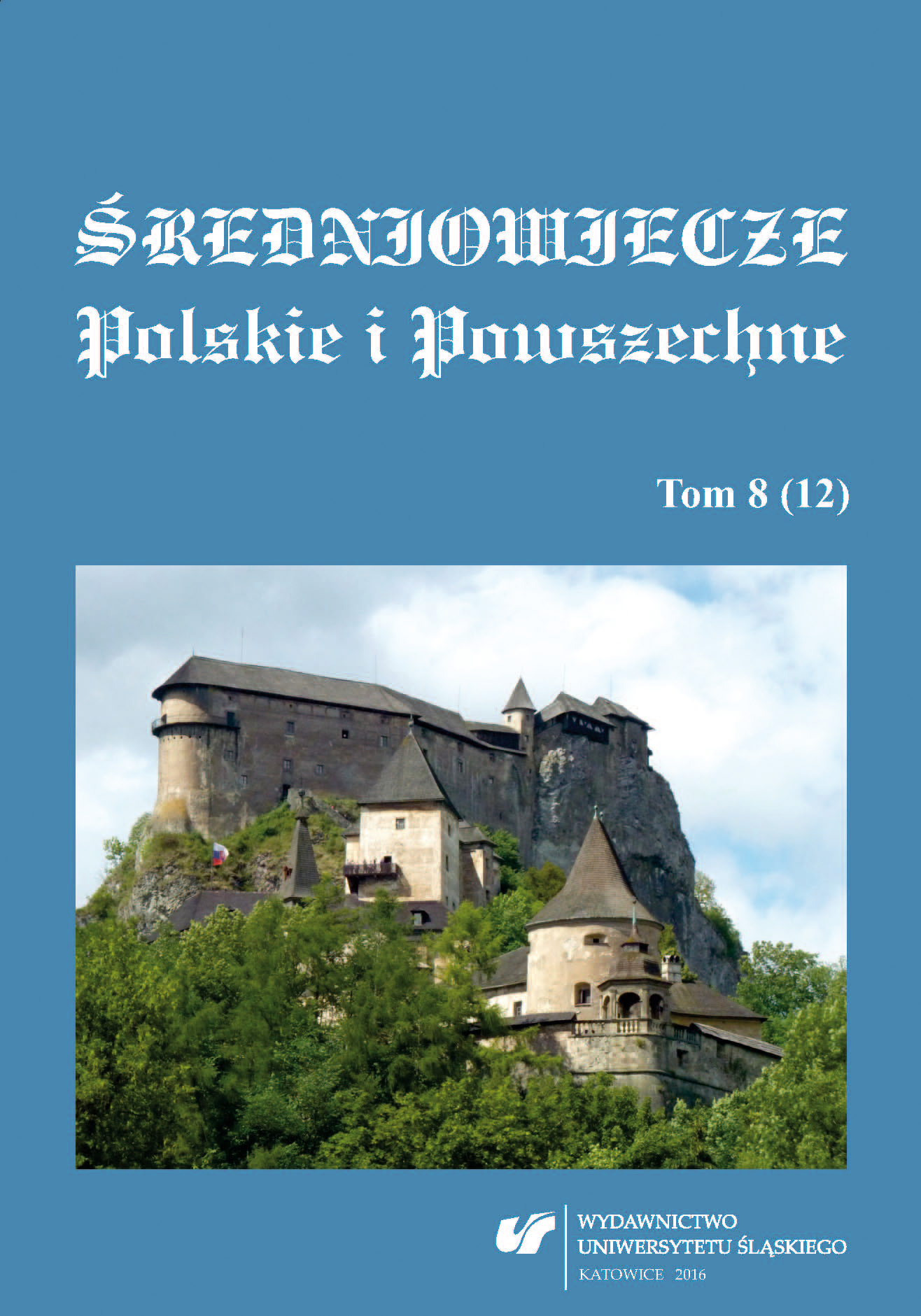Kult relikwii św. Waldeberta w opactwie w Luxeuil w X wieku w świetle „Miracula sanctorum Waldeberti et Eustasii”
The Worship of the Relics of St. Waldebert at the Luxeuil Abbey in the 10th Century in the Context of “Miracula sanctorum Waldeberti et Eustasii”
Author(s): Monika JuzepczukSubject(s): History, Cultural history, History of Church(es), Middle Ages, 6th to 12th Centuries
Published by: Wydawnictwo Uniwersytetu Śląskiego
Summary/Abstract: “Miracula sanctorum Waldeberti et Eustasii” was most likely written by Adso of Montier‑en‑Der in the middle of the 10th century, in order to create and propagate the worship of St. Waldebert as the patron of the Luxeuil Abbey. The following article — on the basis of a textual analysis of “Miracula…” — aims at investigating the genesis of the worship of the relics of St. Waldebert as well as its role and significance for Luxeuil. The monastery, similarly to other abbeys in the Carolingian domain, fell into disrepair as a result of the Norman conquests and the weakening of the royal authority in the face of the rise of local nobility. Moreover, it was at that time that knighthood became recognized as an estate of the realm, while their landed estates continued to be expanded at the expense of the clergy. This, in turn, forced the monks to single‑handedly attempt to reclaim the prestige of the monastery; thus, they created the worship of St. Waldebert, the third abbot of the abbey, who lived in the 7th century. The text written by Adso was to introduce the genesis of the worship, describing his pious life and services to the abbey, as well as encourage people to undertake pilgrimages to his sanctuary. Adso, in his descriptions of the punishments that await those who would persecute the servants of St. Waldebert as well as the miraculous recoveries that await those who worship him, attempted to create a moral example for the worshippers to follow. The worship, which remained of paramount importance to the monks, was also directed at the emerging knighthood. Adso created the image of St. Waldebert as a patron of knights, emphasizing the fact that before his monastic conversion, he had represented the ideal of the Christian knight, miles Christi, and that after his death, he extended his protection to knights and listened to their prayers. Thus, St. Waldebert was to become the patron saint of knights as well as a moral example, in order to force them to accept the superiority of the clergy and treat the estates belonging to the Catholic Church with due reverence. The worship of the relics of St. Waldebert constitutes an example of the early attempts at monastic reform and improving the position and status of the clergy.
Journal: Średniowiecze Polskie i Powszechne
- Issue Year: 2016
- Issue No: 12
- Page Range: 13-45
- Page Count: 33
- Language: Polish

